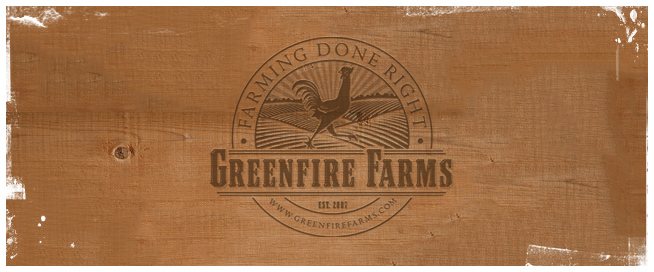Red Rooster Pills
Wednesday, January 25, 2012
It will soon be Valentine’s Day at Greenfire Farms, and with the lengthening days our thoughts turn to the cyclical explosion of new life all around us. Curiously, this brings to mind a place not too far from our farm in the sketchy section of the nearby town where police cars outnumber SUVs by a wide margin. There, in the window of ramshackle general store hangs an old porcelain sign emblazoned with a crowing rooster logo and the simple words “Red Rooster Pills.” Trepidation prevented me from entering the store --or even slowing down my truck in that part of town—but it was not difficult to imagine the alleged benefits of those magical pills, all directed at the male libido.
Of course, the visionary medical researchers at the Red Rooster pill factory keep good company with any number of people –and even nations—that have appropriated the rooster as a sign of virility. As early as 1789 the rooster became a symbol of aggressive French nationalism during the time of the French Revolution. In France and Portugal rooster images appeared on coins and official government stamps trying to draw a favorable association with the national character.
Their perception of the rooster as an animated emblem of virility is not misplaced. If you own chickens of both sexes you know that a rooster spends a great deal of his day courting and breeding with hens. In the jargon of the poultry fancy, roosters placed with hens are said to “cover” the hens, and that word accurately describes the mating practices of the constantly assertive roosters.
Roosters lack the more obvious reproductive organs often associated with mammals. Instead of external plumbing a rooster has, like the hen, a cloaca –a vent at the rear of the bird. (Cloaca is derived from the Latin word for sewer, by the way.) As we’ve learned from caponizing our American Bresse at Greenfire Farms, a rooster’s testicles are fleshy yellow marbles hidden deep inside the body near the spine at the back of the rib cage.
The roosters’ testicles produce sperm, and sperm are easily destroyed by body heat. Chickens have an internal temperature about 3° higher than humans. But, roosters have the unusual ability to produce a large amount of two special proteins that repair or mark for elimination heat-damaged sperm cells. In this way roosters neutralize the damaging effects of their own body heat. Roosters also produce an enormous number of sperm cells. Once they become adults roosters will produce about 35,000 sperm cells every second of their lives until death.
Through a series of internal tubes and glands sperm flows from the testicles to the rooster’s cloaca, and in a flurry a rooster will hop on the back of a hen, tread on her back, and she will raise her rear so that for a split second her cloaca comes in contact with the cloaca of the rooster. (At Greenfire Farms, we often trim the feathers around the vents of the birds to remove any obstructions during this frenzied coupling.) This brief moment is enough to transfer the sperm from cloaca to cloaca where it can be stored by the hen for up to four weeks in special tubules within the oviduct. The act of mating can be repeated by a rooster up to a hundred times a day.
Although roosters can be annoyingly persistent, it is the hens, however, that have the final say. As reported last September in American Naturalist, Oxford University researchers found that hens can selectively eject sperm from roosters they disfavor. This technique, bluntly labeled “sperm dumping,” allows hens to produce eggs fertilized by higher status (read that stronger) roosters and to largely control the genetics of the chicks they produce. This essentially reduces the role of the rooster to a mere afterthought, a fact that may come as quite a shock to our friends at the Red Rooster pill factory.

 Cart:
Cart: 

